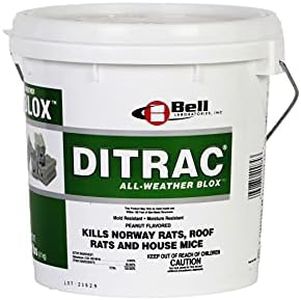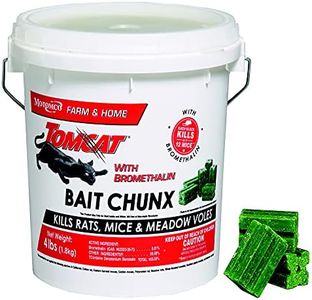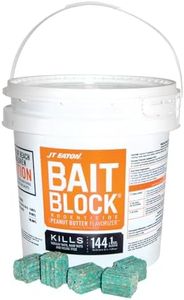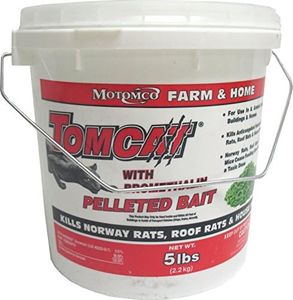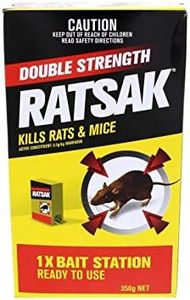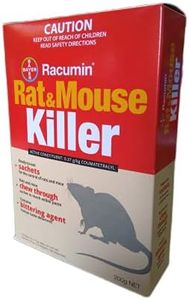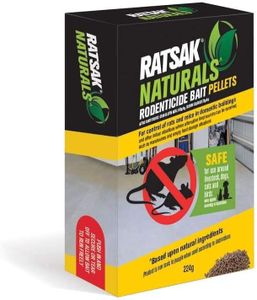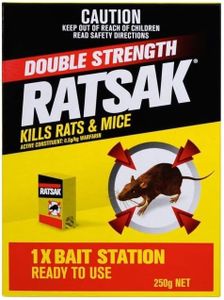We Use CookiesWe use cookies to enhance the security, performance,
functionality and for analytical and promotional activities. By continuing to browse this site you
are agreeing to our privacy policy
8 Best Rat Poisons
From leading brands and best sellers available on the web.Buying Guide for the Best Rat Poisons
Choosing the right rat poison can significantly impact how effectively you manage a rodent problem and how safely you protect other people, pets, and wildlife around your home or property. It's important to understand that not all rat poisons work in the same way, and each type comes with its own benefits and risks. By learning about the key specifications of rat poisons, you can make sure that you select a product that matches your specific needs and minimizes unintended harm.Active IngredientThe active ingredient in rat poison is the chemical responsible for killing rodents. Common types include anticoagulants, which cause internal bleeding, and non-anticoagulants, which act through other methods like disrupting the nervous system. Understanding the active ingredient is important because it determines how the poison works, how long it takes to be effective, and the level of risk to pets and humans if accidentally ingested. When navigating different options, anticoagulants are slower acting and often require repeated feeding, while non-anticoagulants may work faster or with a single dose. Choose based on whether you need immediate results or prefer lower risk to non-target animals, considering your household’s exposure to pets and children.
Type of BaitRat poisons come formulated as pellets, blocks, powders, or liquid baits. This specification matters because some forms are easier for rodents to consume in different environments, and some forms are less likely to be picked up by pets or children. Pellets and blocks are commonly used outdoors or in bait stations; liquids and powders might be chosen for unique situations where dry food is less appealing to rats. Pick a form that’s most practical based on where your infestation is and what kind of access you have to that area.
Secondary Poisoning RiskSecondary poisoning refers to the risk that other animals (like dogs, cats, or wild predators) might get sick by eating a rat that has consumed poison. This spec is crucial, especially if you have pets or wildlife in your area. Some active ingredients are more prone to causing secondary poisoning. To choose wisely, consider how likely it is that pets or other animals might encounter poisoned rats, and opt for products with a lower risk in such cases.
Time to KillThis indicates how long it takes after ingestion for the rat to die. It's significant because faster-acting poisons can solve an infestation quicker, but slower-acting ones can prevent rats from associating the bait with illness, leading to more effective bait uptake. When weighing your options, a longer time to kill may be better for severe infestations or for use in bait shyness-prone rodent populations, while quick action might be favored for isolated incidents.
Required DosageSome poisons need to be consumed just once to be effective, while others require multiple feedings. This matters for practicality; single-dose poisons are easier to manage and check, while multi-dose types may take more effort and monitoring. Think about how often you can check and replenish bait and whether you want the process to be hands-on or as little intervention as possible.
Application MethodThe application method refers to how and where the poison needs to be placed. Some products are designed to be used in bait stations—which add a safety layer—while others can be scattered in open areas. Reviewing this spec helps you ensure the poison can be deployed where the rats are active while keeping accidental exposure for humans and pets to a minimum. Your choice here should hinge on the setup and accessibility within your environment.
